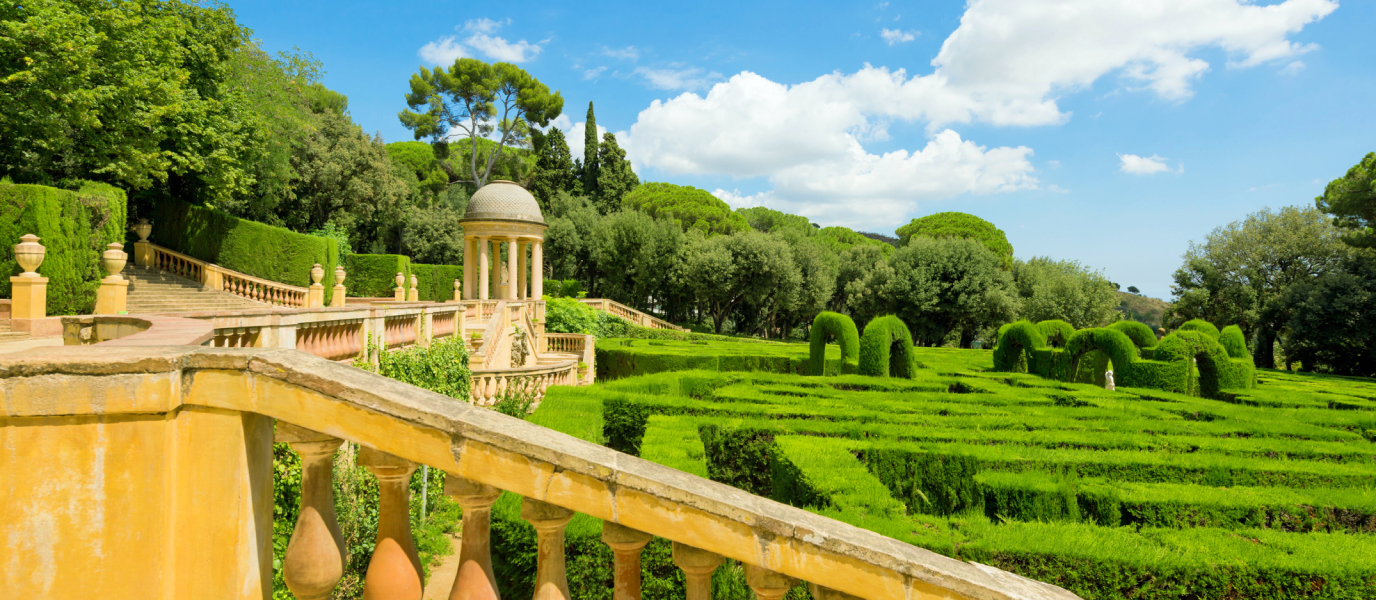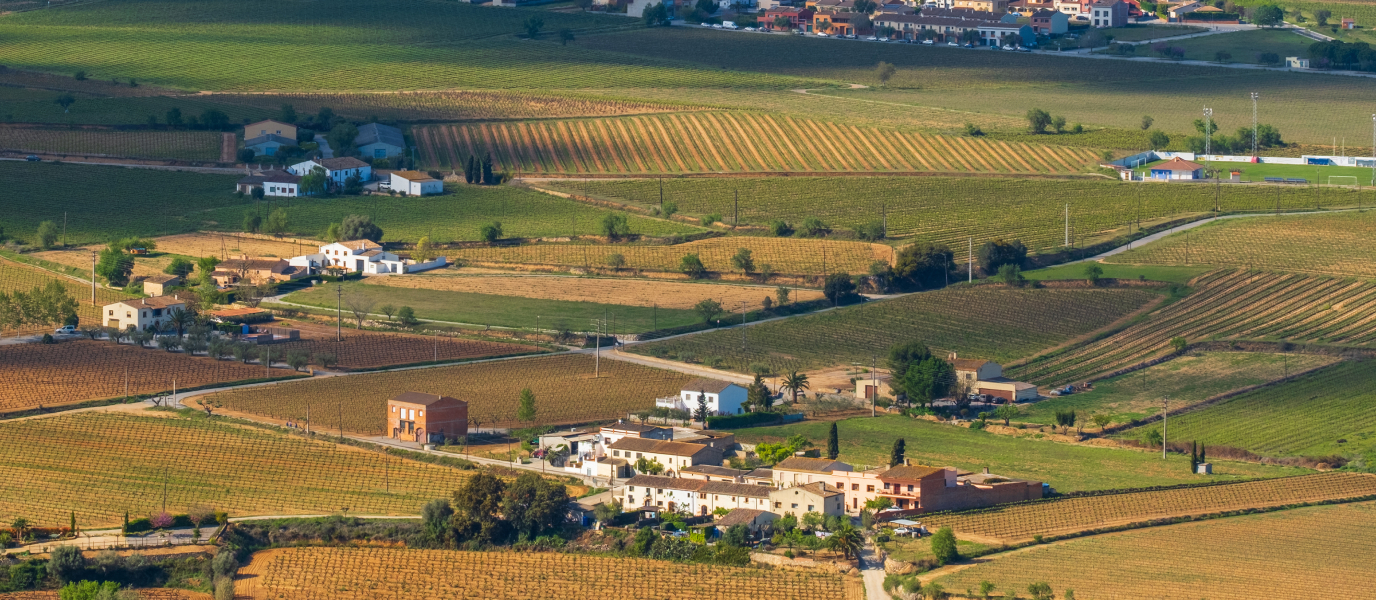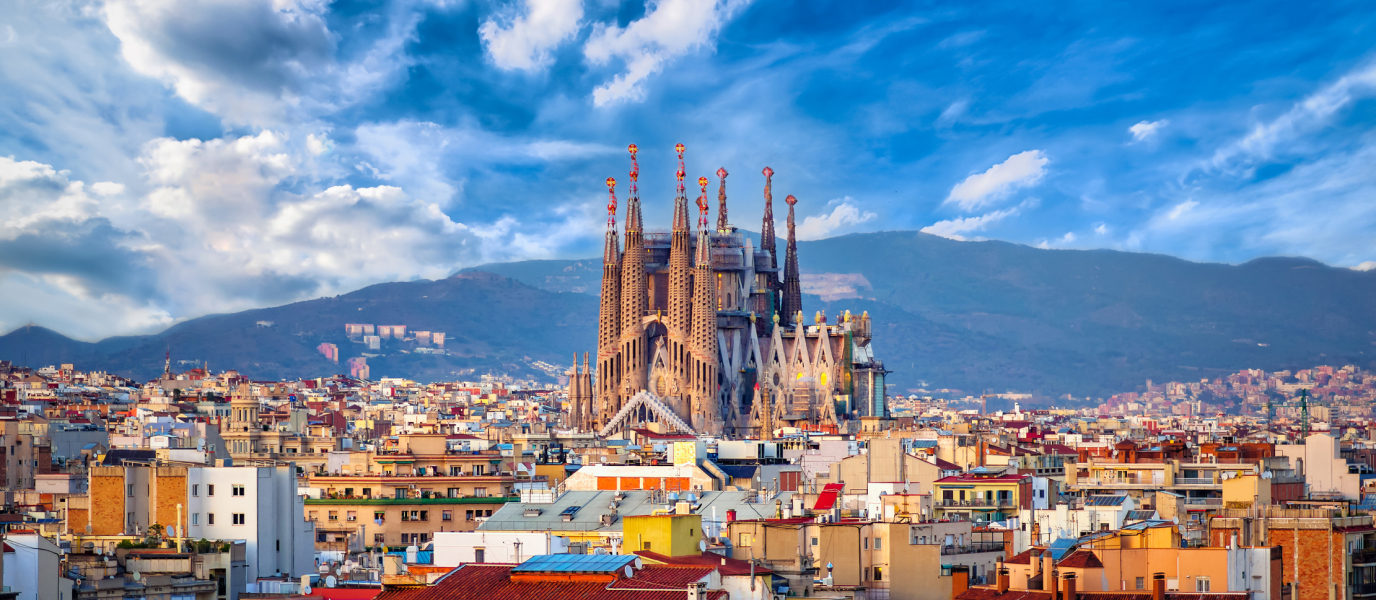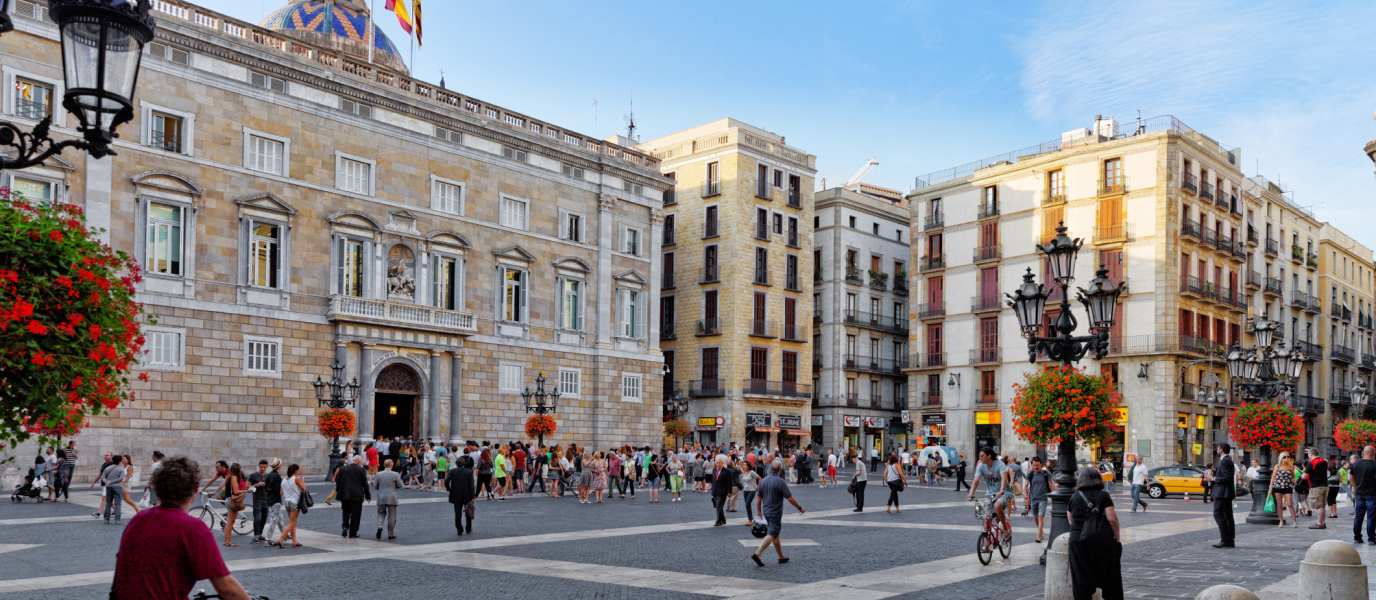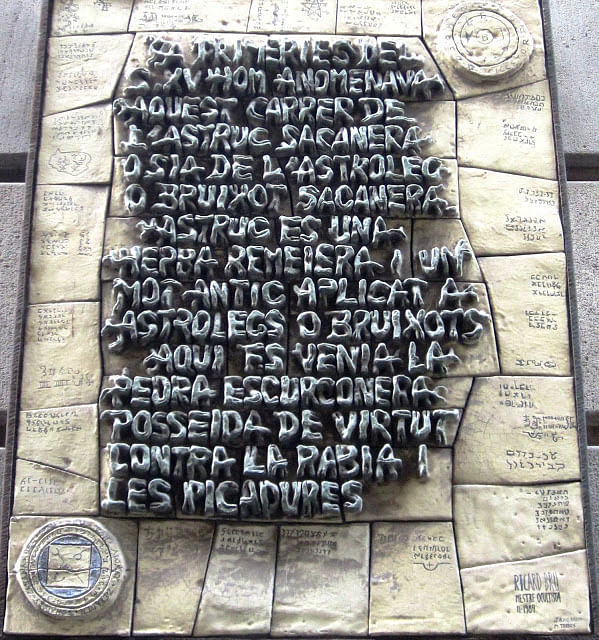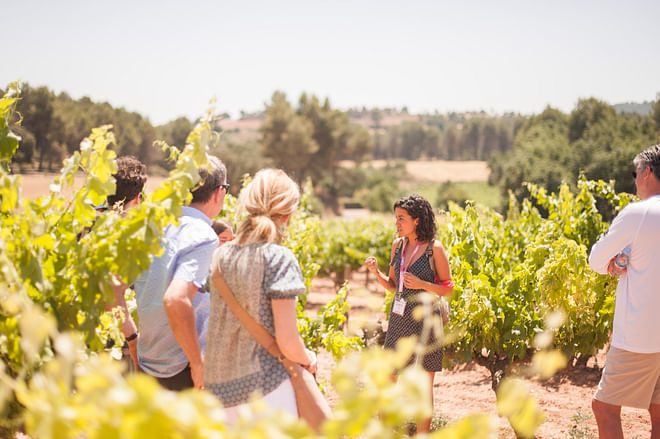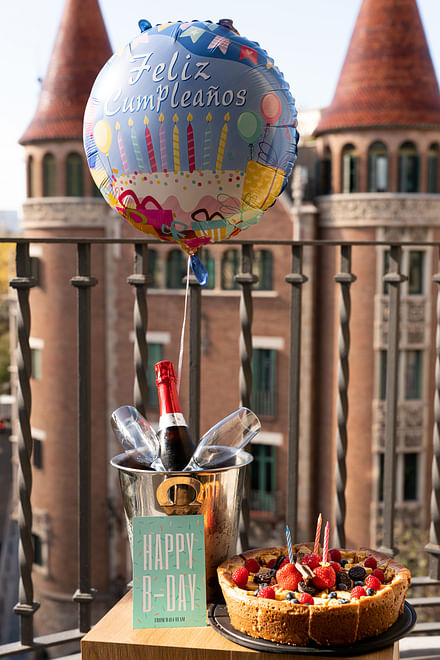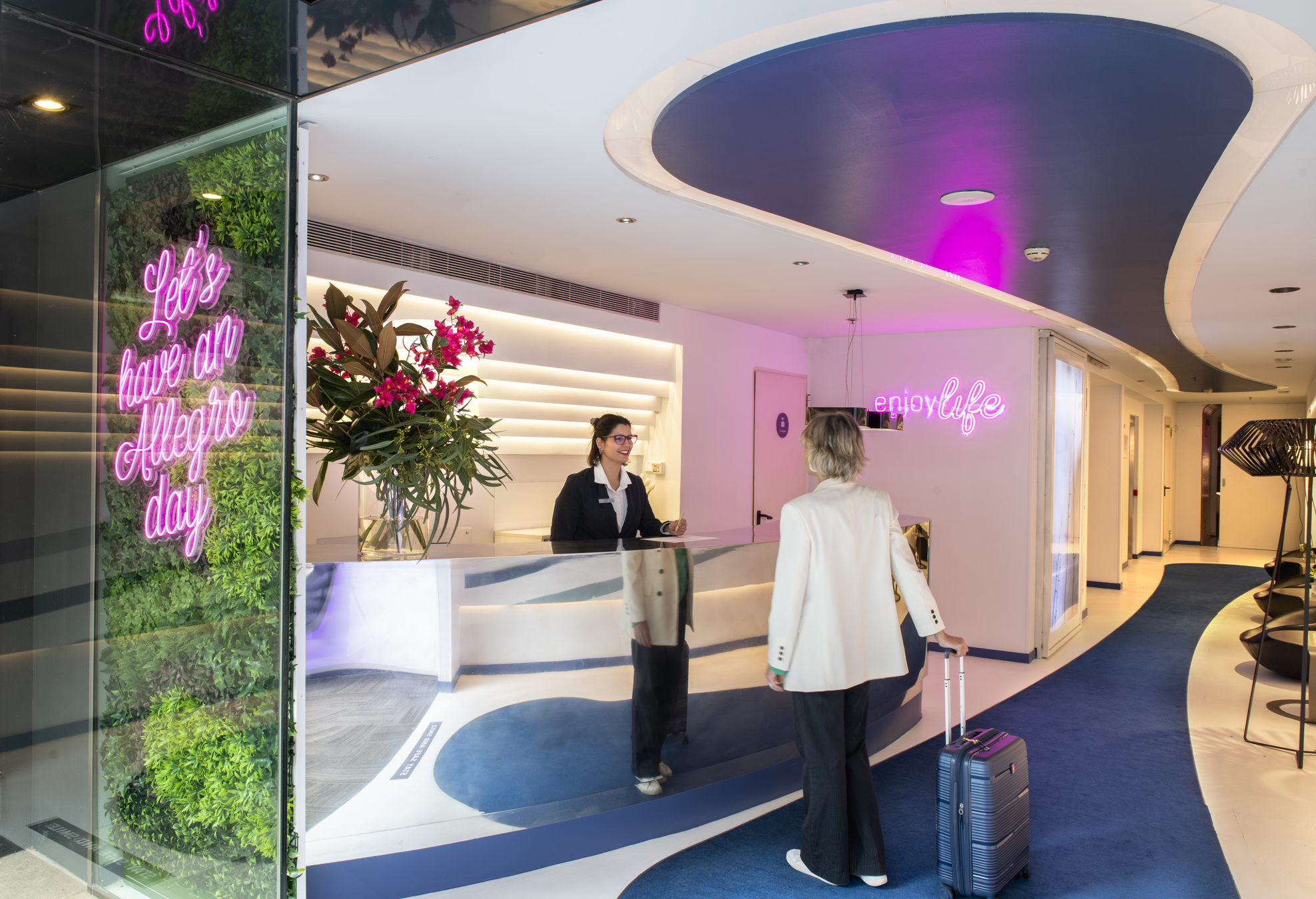The Labyrinth of Horta (Laberint d’Horta) is these days a public space that can be enjoyed by both locals and visitors. However, this was not always the case, as Juan Antonio Desvalls i Ardena, Marquis of Llupià, of Poal and of Alfarrás, conceived it as his own illustrious private garden; in other words, a type of living natural museum to impress those visiting his estate.
In the final decade of the eighteenth century, Desvalls commissioned the Italian landscaper and gardener Domenico Bagutti with the project. He worked on the garden until 1808, creating a space with distinct Neo-Classical features, which have been maintained over time with significant modifications and extensions made during the Romantic era to form a stunning setting that must be seen.
Much like the nearby Park Güell, the Labyrinth of Horta is a public park (since 1971), although capacity is limited to 750 people at once in order to prevent the deterioration that it has been subjected to over time. Within the park is also Palau Desvalls and its adjacent gardens: a medieval construction that underwent numerous extensions until the nineteenth century.
What is the Park of the Labyrinth of Horta like?
The Labyrinth of Horta is located in the district of Horta-Guinardó on the slopes of the Serra de Collserola Natural Park. It takes its name from its labyrinth of cypress-tree hedges, occupying a surface area of 750 linear metres.
As previously mentioned, the garden can be divided into two clearly distinct parts:
- The Neo-Classical Garden: Revolving around the theme of love, this garden is distributed across three spaces: the upper level, the labyrinth and its belvedere, and the lower levels. It boasts numerous monumental fountains, ponds, small temples with mythological figures, pavilions, palatial stairways and grottoes, among others.
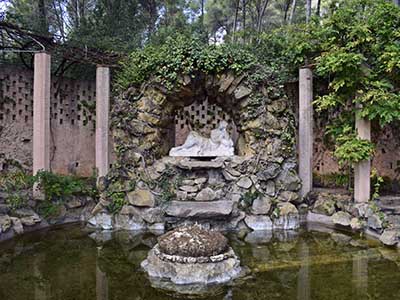
Fonts in Parque de Horta - The Romantic Garden: Situated in front of the previous garden, the main theme of this space is death in line with the sense of tragedy that characterised the artistic and philosophical movement dating from the nineteenth century. In fact, a fake cemetery was even built—of which little remains today—to enhance the melancholy feel of the garden. It is home to the Hermit’s Cabin, which was ‘inhabited’ by a mechanical automaton that emulated a rather sinister monk. The Romantic Garden also boasts features from other cultures, such as the so-called Chinese Gate and the Oriental Garden.
The Desvalls mansion, situated next to the entrance of the Park of the Labyrinth of Horta boasts some particularly old features, such as a defensive tower from the eighth century. That said, the main building dates from the late eighteenth and early nineteenth century. It consists of a three-storey building with two lateral wings in the shape of a semi-circle. Since 1993, it has housed the Labyrinth of Horta Training Centre, a municipal body that teaches gardening and landscaping courses.
Behind the mansion is the Boxwood Garden, characterised by its parterres where pruned box trees grow. The garden is decorated with four reliefs recreating scenes from Classical mythology.
Nature in the Labyrinth of Horta
The Neo-Classical Garden of the Labyrinth of Horta originally had an educational purpose, aiming to bring visitors in touch with the natural features of the garden in an educational way. This explains the biological diversity that exists in the space, including specimens of the following plant species:
- Holm oak
- Oak
- Carob
- Western white pine
- Common myrtle
- Magnolia
- Various types of palm tree
- Canary Island pine tree
- Horse-chestnut
- Japanese pagoda tree
- Linden tree
- European plane tree
- Judas tree
- Sequoia
- Cypress
- Box tree
- Himalayan cedar
- Yew tree
- Laurel
- Fern
- Ash
In terms of fauna, the park is home to wildlife characteristic of the Serra de Collserola, such as red squirrels, bats, common genets, moles, wild boars, badgers, marsh frogs, painted turtles, Catalan wall lizards and some species of snake. The birds found in the park are of special importance with species such as:
- Sparrow
- Common woodpigeon and homing pigeon
- Blue tit
- European robin
- Common magpie
- Eurasian collared-dove
- Monk parakeet
- White wagtail
- Coal tit
The most ‘instagrammable’ places
Due to its setting and varied landscape, the park of the Labyrinth of Horta is particularly photogenic, which is why it’s a social media favourite. Some of the most amazing places in this green space include:
- The labyrinth: above all, the view of it seen from the balustrade on the upper level. In the middle of the labyrinth is a statue of Eros, the Greek god of love.
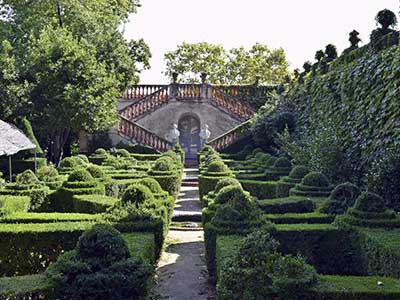
Belvedere stairway - The Belvedere stairway: the entrance point to the labyrinth from the upper level of the Neo-Classical Garden.
- The Temples of Danaë and Ariadne: especially with the labyrinth in the background. So spectacular are these constructions that at the end of the nineteenth century they were turned into a stage for open-air theatre performances.
- The Moss Garden: where there is a grotto with a fountain in the shape of a Minotaur-head.
- The private courtyard situated in front of the Desvalls mansion.
- The Boxwood Garden: above all the main path with the mansion in the background.
- The Flower Garden pond: decorated with the head of Triton and two urns adorned with seashells.
- The Romantic Canal: three metres deep and once navigable.
- The pond and pavilion of Charles IV: built in Neo-Classical Italian style.
- The Hermit’s and Farmers’ Cabins: their apparent neglected state gives them quite a sombre, but no less striking, feel.
- The grotto of the nymph Egeria: inspired by similar grottoes in the United Kingdom, although this one was made by the Italian landscaper Bagutti.
- The Pyramid Fountain: whose water spout is found in the head of an imposing lion.
- The Chinese Gate: situated next to the entrance to the Romantic Garden.




































































